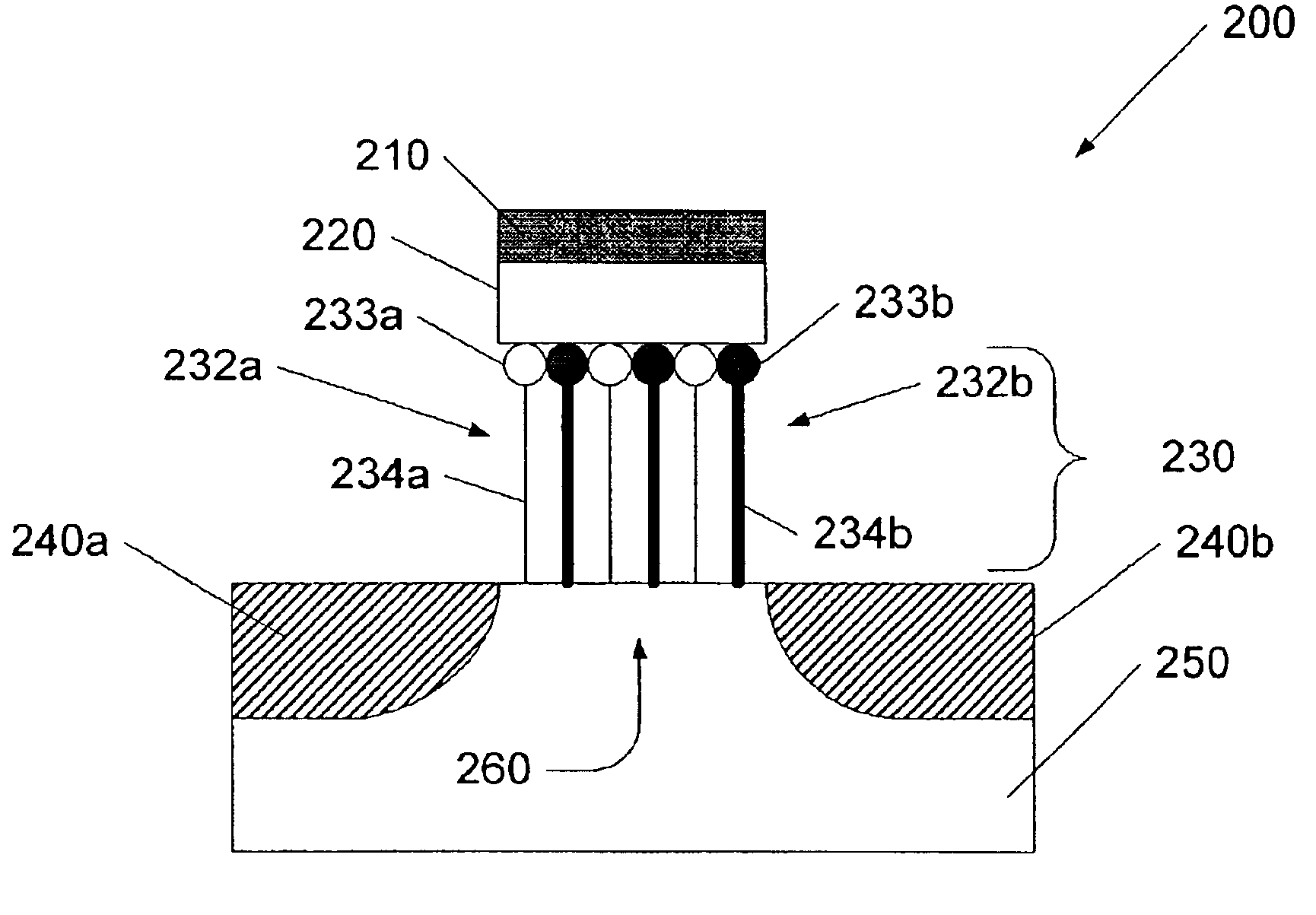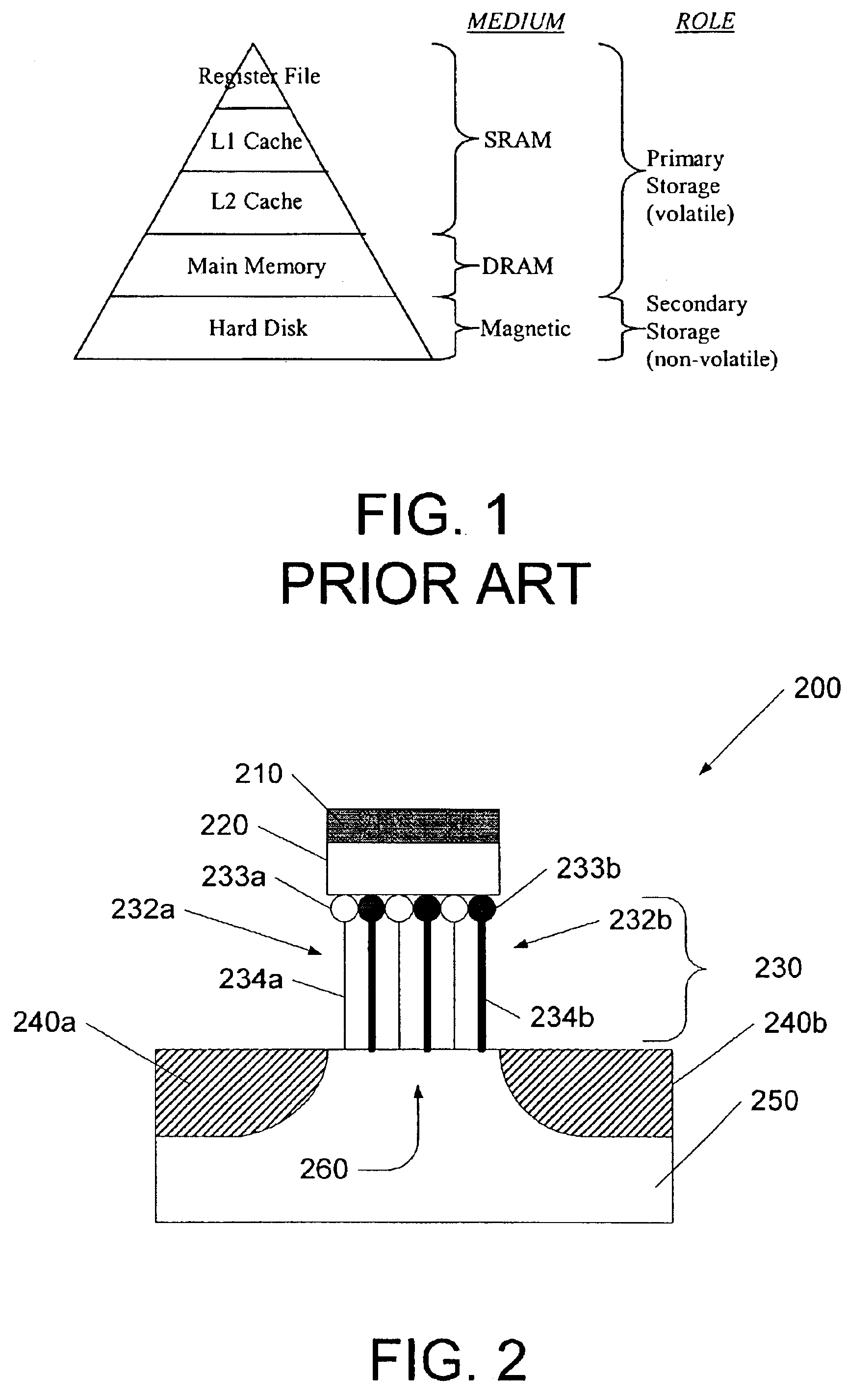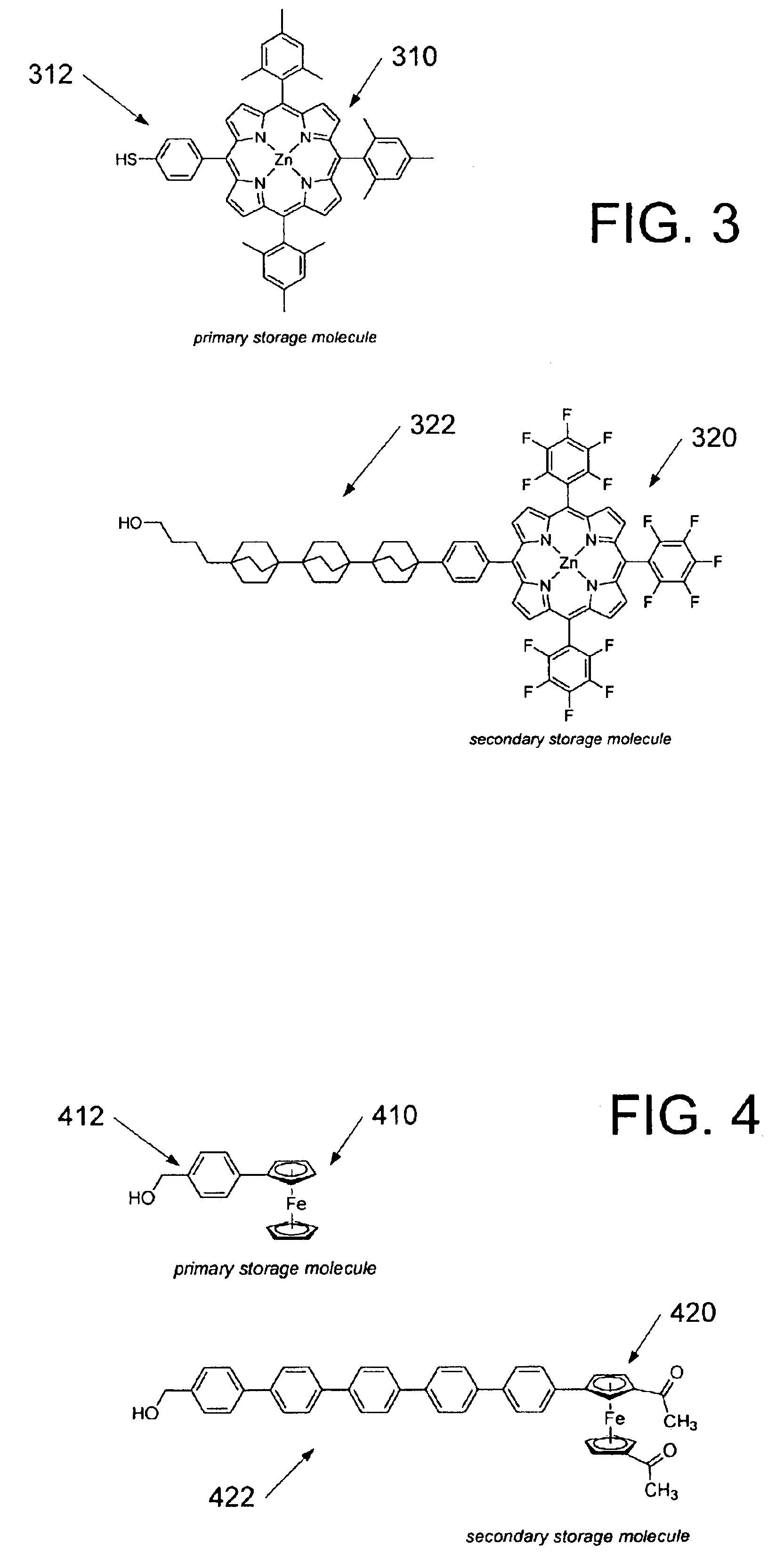Variable-persistence molecular memory devices and methods of operation thereof
a molecular memory and variable-persistence technology, applied in the field of memory devices, can solve the problems of consuming significant power, entanglement of overhead, and long time-consuming loading of operating systems
- Summary
- Abstract
- Description
- Claims
- Application Information
AI Technical Summary
Benefits of technology
Problems solved by technology
Method used
Image
Examples
Embodiment Construction
[0026]The present invention now will be described more fully hereinafter with reference to the accompanying drawings, in which embodiments of the invention are shown. This invention may, however, be embodied in many different forms and should not be construed as limited to the embodiments set forth herein; rather, these embodiments are provided so that this disclosure will be thorough and complete, and will fully convey the scope of the invention to those skilled in the art. Like numbers refer to like items throughout. It will be understood that when structures are referred to as being coupled to one another, this coupling may be direct or via one or more intervening structures.
[0027]According to some embodiments of the invention, variable-persistence molecular memory cells may be provided by using a combination of first and second charge storage molecules linked to an electrode of the cell by a molecular linkage that provides respective first and second electron transfer rates for ...
PUM
 Login to View More
Login to View More Abstract
Description
Claims
Application Information
 Login to View More
Login to View More - R&D
- Intellectual Property
- Life Sciences
- Materials
- Tech Scout
- Unparalleled Data Quality
- Higher Quality Content
- 60% Fewer Hallucinations
Browse by: Latest US Patents, China's latest patents, Technical Efficacy Thesaurus, Application Domain, Technology Topic, Popular Technical Reports.
© 2025 PatSnap. All rights reserved.Legal|Privacy policy|Modern Slavery Act Transparency Statement|Sitemap|About US| Contact US: help@patsnap.com



